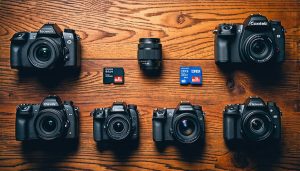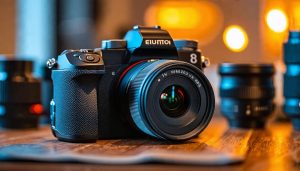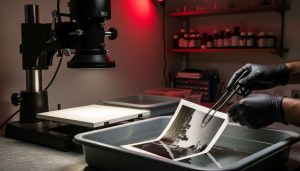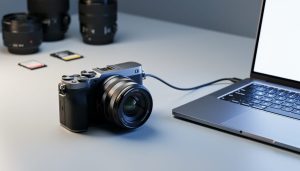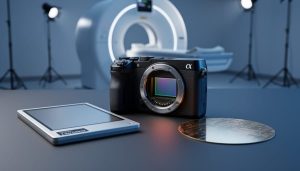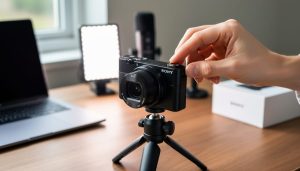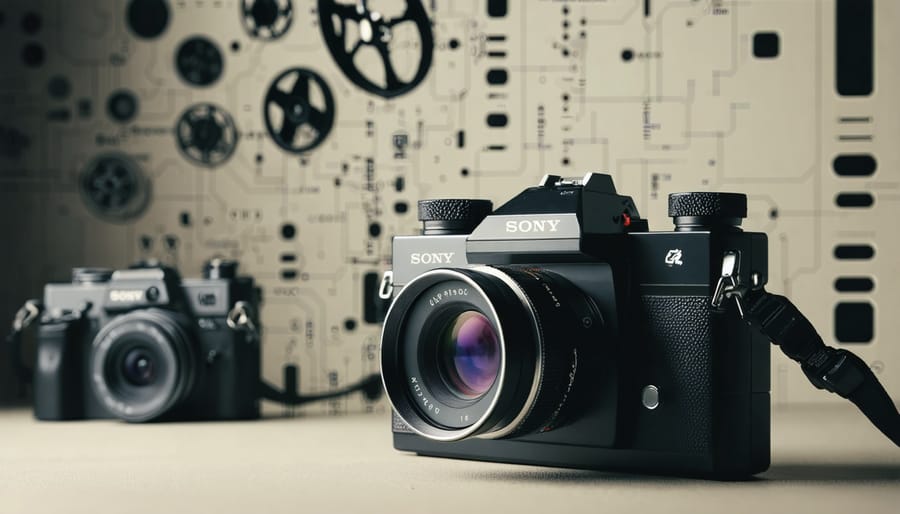
The whirring sound of a 1960s video camera tells a story of technological revolution that forever changed how we capture moving images. In an era when television was reshaping entertainment, these groundbreaking cameras—from the iconic Sony Portapak to the revolutionary Ampex VR-1000—transformed ordinary people into filmmakers. While bulky by today’s standards, these pioneering devices marked humanity’s first real opportunity to record and preserve life’s moving moments without the complexity and expense of traditional film.
The 1960s video camera represents more than just vintage technology; it embodies a pivotal moment when video recording shifted from exclusive broadcast studios into homes and streets. These cameras, with their distinctive design featuring large shoulder-mounted bodies and separate recording units, laid the foundation for today’s digital video revolution. Their influence extends beyond mere nostalgia—they established fundamental principles of handheld recording that continue to shape modern camera design.
For collectors and enthusiasts, these cameras offer a tangible connection to a transformative period in media history, when the democratization of video recording first began. Understanding these pioneering devices provides crucial insight into how far we’ve come—and perhaps where we’re heading—in our endless quest to capture life in motion.
The Evolution of 60s Video Technology
From Professional to Consumer Market
The 1960s marked a pivotal shift in video camera technology, as manufacturers began adapting professional broadcasting equipment for the consumer market. Prior to this transition, video cameras were bulky, expensive machines exclusively used by television stations and production companies. The introduction of more compact and affordable models, though still relatively expensive by today’s standards, opened up new possibilities for home videography.
Companies like Sony and Ampex led this transformation by developing portable video recording systems that, while not exactly lightweight by modern measures, were manageable enough for individual users. The rise of these consumer-oriented cameras sparked a revolution in personal video documentation, laying the groundwork for today’s debate between film versus digital technology.
The Sony CV-2000, released in 1965, represents a perfect example of this shift. While it cost around $1,000 (equivalent to over $8,000 today), it was significantly more accessible than professional equipment costing tens of thousands. These early consumer video cameras, despite their limitations, democratized video recording and paved the way for the camcorder revolution of the following decades.
Key Technological Breakthroughs
The 1960s marked a revolutionary period in video camera technology, with several groundbreaking innovations that changed the landscape of videography forever. The introduction of the portable video recorder in 1967 by Sony and JVC transformed what was previously studio-bound equipment into something journalists and consumers could use in the field. This development came with the legendary Portapak, which combined a handheld camera with a separate recorder unit worn on a shoulder strap.
Another significant breakthrough was the development of solid-state image sensors, laying the groundwork for modern digital cameras. The decade also saw the introduction of through-the-lens light metering, which dramatically improved exposure accuracy. The emergence of automated exposure systems made video cameras more accessible to amateur filmmakers and home users.
Color recording capabilities also made significant strides during this era. While early 60s cameras were primarily black and white, by the late 1960s, color video recording became more prevalent, though still expensive. The introduction of standardized recording formats helped establish consistency across different manufacturers, setting the stage for the video revolution of the 1970s.
Iconic 60s Video Camera Models
Sony Portapak CV-2000
The Sony Portapak CV-2000, released in 1965, revolutionized video recording by introducing the first truly portable video recording system. Before its arrival, video equipment was bulky, studio-bound, and primarily used by television networks. The CV-2000 changed everything by combining a handheld camera with a separate recorder unit that could be carried over the shoulder.
Weighing approximately 20 pounds in total, the system consisted of two main components: the camera unit and the recorder backpack. The camera captured black-and-white video and recorded onto 1/2-inch wide video tape, offering about 20 minutes of recording time per reel. While these specifications might seem modest by today’s standards, they were groundbreaking for their time.
The Portapak’s impact on visual arts and documentary filmmaking cannot be overstated. Artists, activists, and independent filmmakers suddenly had access to a medium that was previously reserved for large broadcasting companies. The system’s relatively affordable price point (around $1,200 in 1965) made it accessible to universities, art institutions, and dedicated enthusiasts.
Despite its limitations, including the lack of color recording and somewhat cumbersome operation, the CV-2000 paved the way for personal video recording. Its influence can be traced through the evolution of camcorders, leading right up to today’s digital video cameras. For collectors and historians, a working CV-2000 represents a pivotal moment in video technology’s democratization.
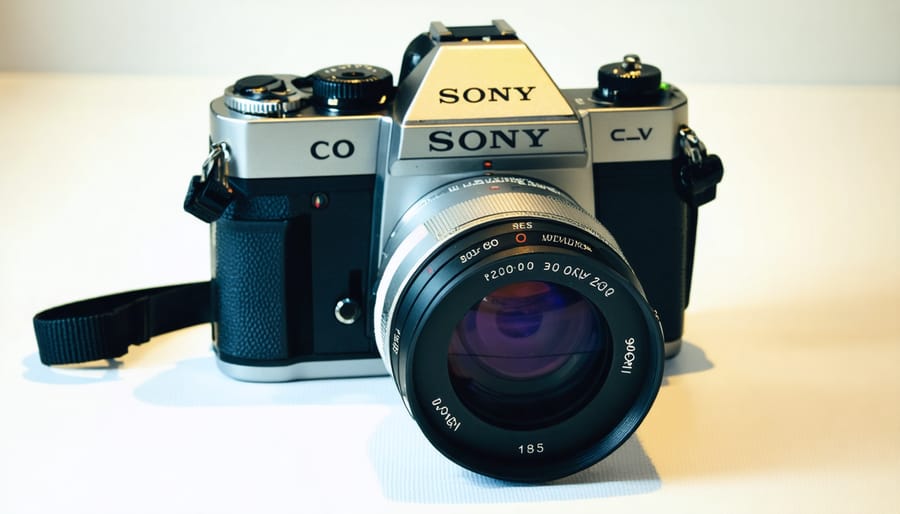
Ampex VR-3000
The Ampex VR-3000 represented a groundbreaking achievement in 1960s broadcast television, establishing itself as the first truly portable professional video recording system. Introduced in 1967, this revolutionary device allowed television crews to capture broadcast-quality footage outside the studio with unprecedented mobility.
Weighing approximately 50 pounds with its backpack configuration, the VR-3000 utilized 2-inch quadruplex videotape format, the broadcast standard of the era. Despite its considerable bulk by today’s standards, it was remarkably compact compared to its studio-bound predecessors, which often filled entire rooms.
The system consisted of three main components: the video recording unit, a separate camera head, and a power supply backpack. What made the VR-3000 particularly remarkable was its ability to maintain broadcast-quality standards while operating in the field. It featured a unique servo-controlled tape transport system that ensured stable recording even when the operator was in motion.
News organizations and broadcasting networks quickly adopted the VR-3000, using it to capture historic moments throughout the late 1960s. Its impact was particularly evident during the coverage of the Apollo moon missions, where it provided high-quality video documentation of these momentous events.
The VR-3000’s introduction marked a significant shift in television production, paving the way for the electronic news gathering (ENG) revolution that would follow in the 1970s.
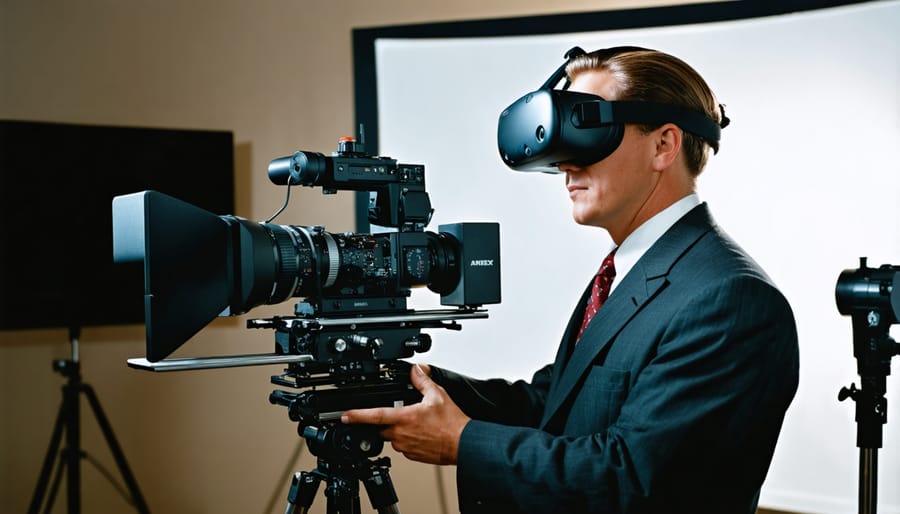
Other Notable Models
While the Sony Portapak dominated the 1960s video camera market, several other notable models left their mark on the era. The Ampex VR-7000, introduced in 1963, brought professional-quality video recording to television stations and educational institutions. Though bulky by today’s standards, it revolutionized news gathering with its relatively portable design and reliable performance.
The Norelco EL3400, released in 1965, gained popularity among documentary filmmakers for its excellent low-light performance and sturdy construction. Its distinctive black metal housing and precision German optics made it a favorite among serious videographers who needed dependable equipment for field recording.
Canon’s entry into the consumer video market, the Canovision 8E, offered an interesting alternative with its hybrid film-video capability. Released in 1968, it could record both standard 8mm film and video signals, making it a versatile choice for families wanting to preserve memories in multiple formats.
The Craig 6401 deserves mention for introducing automatic light metering to consumer video cameras, making it easier for amateur videographers to achieve proper exposure. Its compact design and innovative features, including a built-in microphone, set new standards for user-friendly operation.
The JVC Color Video Camera, though appearing late in the decade, pioneered affordable color video recording for the consumer market, paving the way for the explosion of home video in the 1970s.
Buying and Collecting 60s Video Cameras
What to Look For
When buying vintage equipment, particularly 60s video cameras, there are several crucial factors to evaluate. First, check the viewfinder’s clarity and functionality, as these often deteriorate over time. A foggy or damaged viewfinder can make the camera practically unusable.
Pay close attention to the mechanical components. The film transport mechanism should operate smoothly, and all control dials should turn without resistance. Listen for unusual sounds when operating the camera – grinding or clicking noises often indicate internal damage.
The lens condition is paramount. Look for fungus, scratches, or separation between lens elements. Hold the lens up to a light source to check for haziness or internal debris. The aperture blades should move freely and form a perfect polygon when stopped down.
Battery compartments require thorough inspection for corrosion. Many 60s cameras used mercury batteries, which are notorious for leaking. Check if the camera can be adapted to use modern batteries, as original types may be hard to find or prohibited.
Consider the availability of spare parts and whether the camera model has known repair specialists. Some popular brands like Bolex and Bell & Howell have better support networks than obscure manufacturers. Lastly, always test the camera’s operation with film if possible, as electronic components can be particularly troublesome in vintage video equipment.
Common Issues and Solutions
Many 60s video cameras suffer from common issues that can be addressed with proper care and knowledge. Light seals often deteriorate over time, causing light leaks that affect footage quality. Replacing these seals with modern foam materials can effectively solve this problem. Another frequent issue is battery corrosion in the power compartment, which requires thorough cleaning with vinegar solution and cotton swabs.
Motor problems are particularly common in these vintage cameras, often manifesting as irregular running speeds or complete failure. Regular lubrication of moving parts with camera-specific oil can help prevent this. The viewfinder might appear cloudy due to fungus growth, but this can usually be remedied by careful cleaning with isopropyl alcohol.
Film transport mechanisms frequently stick or jam, especially after long periods of disuse. Gentle manipulation and proper cleaning can often restore smooth operation. Audio recording issues are also prevalent, typically caused by worn-out belts or degraded capacitors. While belt replacement is relatively straightforward, capacitor issues usually require professional repair services.
Remember that patience and gentle handling are crucial when addressing these issues, as replacement parts are increasingly scarce.
Price Guide and Market Trends
The market for 1960s video cameras has seen significant appreciation over the past decade, with prices varying widely based on condition, model, and historical significance. Professional-grade cameras from manufacturers like Bolex and Bell & Howell typically command prices ranging from $300 to $2,000, while consumer models generally fetch between $100 and $500. Before diving into vintage camera investments, it’s essential to familiarize yourself with basic camera buying essentials and market trends.
Rare models like the Canon Scoopic 16M and Beaulieu R16 can sell for upwards of $3,000 when found in excellent working condition. The investment potential remains strong, with annual value increases of 5-15% for well-maintained examples. However, buyers should note that mechanical condition significantly impacts value, and restoration costs can quickly exceed purchase prices.
Collectors particularly value original cases, manuals, and accessories, which can add 20-30% to the camera’s worth. The growing interest in analog filmmaking among younger generations suggests continued market strength for these vintage pieces.
Preserving and Using 60s Video Cameras Today
Maintenance Tips
Preserving your 60s video camera requires dedicated attention to equipment maintenance and protection. Store your camera in a cool, dry place with silica gel packets to prevent moisture damage. Regular cleaning is essential – use a soft brush to remove dust from external surfaces and a microfiber cloth for the lens. Never use harsh chemicals or alcohol-based cleaners, as these can damage the delicate materials common in vintage cameras.
Check rubber seals and light-blocking foam regularly, as these often deteriorate with age. If you notice degradation, consult a specialist for replacement. Keep mechanical parts functioning smoothly by operating all controls periodically, even when not filming. This prevents lubricants from becoming sticky and components from seizing up.
For battery-operated models, always remove batteries during long-term storage to prevent corrosion. If your camera has a viewfinder, keep it covered when not in use to protect the focusing screen. When transporting your camera, use a padded case designed for vintage equipment to minimize shock and vibration damage.
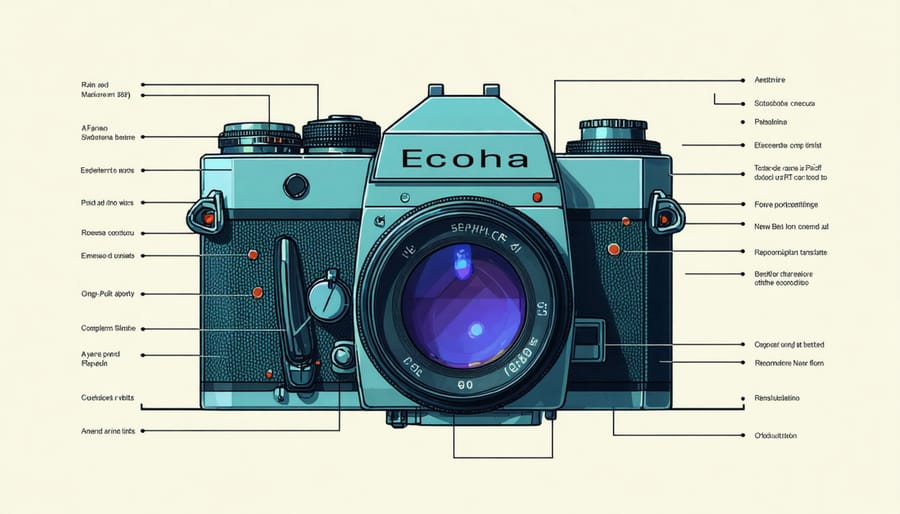
Modern Applications
Despite their age, 60s video cameras have found surprising new life in contemporary creative projects. Many indie filmmakers and music video directors deliberately seek out these vintage cameras to achieve authentic retro aesthetics that digital filters simply can’t replicate. The distinct color saturation, light leaks, and grain patterns characteristic of 60s footage create a uniquely nostalgic atmosphere that resonates with modern audiences.
Documentary filmmakers often incorporate vintage camera footage to add historical authenticity to their projects, while experimental artists combine old and new technologies to create striking visual contrasts. Some photographers use these cameras to capture behind-the-scenes footage at fashion shoots, adding a layer of vintage glamour to their work.
Social media content creators have also embraced 60s cameras, using them to stand out in an oversaturated digital landscape. The imperfections and warm tones of vintage footage provide a refreshing alternative to the crisp, clinical look of modern digital video. Even wedding videographers have begun offering “vintage packages” where portions of the day are captured on restored 60s cameras, creating timeless mementos with genuine retro charm.
The 1960s video cameras represent more than just technological artifacts; they symbolize a pivotal moment in visual storytelling and documentation. These cameras democratized filmmaking, putting the power of motion picture creation into the hands of everyday people for the first time. Their influence continues to resonate today, with many modern filmmakers and artists deliberately seeking out vintage 60s cameras to capture their unique aesthetic qualities and character. The mechanical simplicity, distinctive image quality, and tactile operation of these cameras offer something that modern digital equipment simply cannot replicate. Whether displayed in museums, cherished by collectors, or still actively used by experimental filmmakers, 60s video cameras remain testament to an era of innovation that forever changed how we capture and share our stories. Their enduring appeal lies not just in nostalgia, but in their authentic contribution to the art of cinematography.



